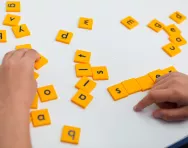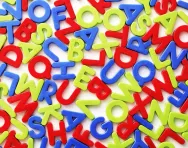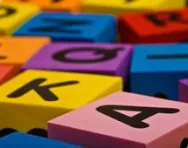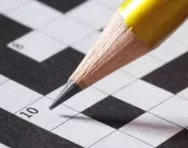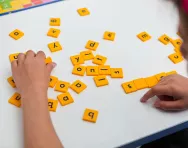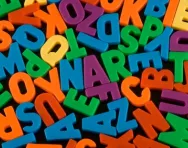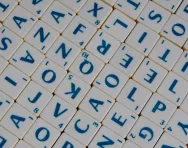Important update from TheSchoolRun
For the past 13 years, TheSchoolRun has been run by a small team of mums working from home, dedicated to providing quality educational resources to primary school parents. Unfortunately, rising supplier costs and falling revenue have made it impossible for us to continue operating, and we’ve had to make the difficult decision to close. The good news: We’ve arranged for another educational provider to take over many of our resources. These will be hosted on a new portal, where the content will be updated and expanded to support your child’s learning.
What this means for subscribers:
- Your subscription is still active, and for now, you can keep using the website as normal — just log in with your usual details to access all our articles and resources*.
- In a few months, all resources will move to the new portal. You’ll continue to have access there until your subscription ends. We’ll send you full details nearer the time.
- As a thank you for your support, we’ll also be sending you 16 primary school eBooks (worth £108.84) to download and keep.
A few changes to be aware of:
- The Learning Journey weekly email has ended, but your child’s plan will still be updated on your dashboard each Monday. Just log in to see the recommended worksheets.
- The 11+ weekly emails have now ended. We sent you all the remaining emails in the series at the end of March — please check your inbox (and spam folder) if you haven’t seen them. You can also follow the full programme here: 11+ Learning Journey.
If you have any questions, please contact us at [email protected]. Thank you for being part of our journey it’s been a privilege to support your family’s learning.
*If you need to reset your password, it will still work as usual. Please check your spam folder if the reset email doesn’t appear in your inbox.
Teachers’ tips to make tricky spellings easy

Highlight the hard bit
Frequently, there will be one part of a word that trips up your child each time. Look at the word together and highlight the part that they find particularly tricky. For example:
Night Separate Was Receive Weird
What Two Friend Said Cheap
Or there may be two parts that need attention, for instance;
Accommodate Address Necessary
Once you’ve done the highlighting together, get them to write out the word again without looking. This time they’ll be more focused on getting that tricky bit right, and will be able to remember how it looks.
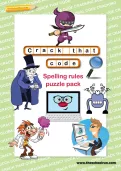
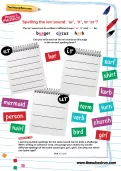
Claim FREE Spelling Resources Today
- Spelling workbooks
- Step-by-step programme
- Spelling test packs
- 100s of worksheets & games
Make the spelling stick
If one or two parts of a particular word just don’t seem to ‘sink in’ by simply highlighting them, try to think of other ways to help them stick.
For example:
- With weird, people often get the i and e confused. Help by saying we are weird, so your child remembers that we is the first part of the word.
- For the double s in dessert: desserts are both sweet and sugary.
- For a word with two ‘tricky’ parts, like necessary, think Cats Eat Salty Sardines to remember the c and the double s (see 'Make it an acronym' below).
Break it down
Try breaking down polysyllabic words to make each syllable easier to remember. Even young children may be doing this at school – they might call syllables ‘beats’. Help them decipher how many ‘beats’ or syllables there are in a word by clapping the word together, one clap per syllable.
So, for two-syllable words…
Danger Dan / ger
Windmill Wind / mill
Option Op / tion
And for three-syllable words…
Relation Re / la / tion
Beautiful Beau / ti / ful
It may help to segment the words into a chart like this:
| Syllable 1 | Syllable 2 | Syllable 3 |
| Re | la | tion |
Copy it, copy it, recall it
Use a chart like this:
| Copy it | Copy it | Recall it |
| What | What | What |
After your child has copied the word twice, fold the paper over so they can’t see what they’ve written and ask them to have a go at writing the word unaided. They should be able to recall the spelling without looking.
Another classic technique is known as Look, cover, Write and Check.
So, they look at the word...
Cover the word...
Write the word...
And finally check it.
Download our Look, Cover, Write and Check blank template to apply this method to your child's spelling words.
Create pictures in your mind
It’s a well-researched memory trick: if you can conjure up a visual image, what you’re trying to remember (in this case spellings!) may come more readily.
For example, if your child is learning ‘bank’ but writing ‘banc’, help them remember it’s a ‘kicking K’ by saying, “I kicked my legs into the bank”. If they’re writing ‘cat’ as ‘kat’ remind them it’s a ‘curly c’ by saying, “The cat likes to curl up and go to sleep”. Encourage your child to invent their own ways of remembering words; if they have thought up the image themselves, it will be a more powerful tool.
Say it as it’s spelled
To remember double s, really stress and extend the sound: fussssssss.
To remember double z, again stress and extend it: buzzzzzzzz.
Same for double e: seeeeeeeeem.
To remember ea instead of ee, pronounce it as two separate sounds: cre – a –m.
Make it an acrostic
Sometimes, visualising a difficult word in a different way can suddenly make it stick. Create a phrase from each letter of a word and turn it into an acrostic, which can be easier to remember than the word itself. Try these, or have your child make up their own!
Because:
Big
Elephants
Can
Always
Understand
Small
Elephants
Ocean: Only Cats’ Eyes Are Narrow
Rhythm: Rhythm Helps Your Two Hips Move
Necessary: Never Eat Chips Eat Salad Sandwiches And Raspberry Yoghurt
If this strategy really works with your child, our Thinkalink! book is essential further reading.
In the palm of your hands
If your child is a kinaesthetic learner (in other words they learn best through doing), ask them to write each letter of the word into the palm of their hand or onto their leg with their finger. With enough repetitions, they’ll remember how the word felt to write (this is known as muscle memory).
Sing the word
This is reportedly one of the most popular methods used by contestants at American Spelling Bees. Simply learn the word by saying or singing the letters out loud, developing a melody. This melody should then imprint in your child’s memory; if they forget a spelling they will still remember how the word’s rhythm and sound, which will serve as a prompt.
Try some more unusual, yet effective methods to help your child learn how to spell, then reinforce what you've learned with our range of spelling worksheets.

